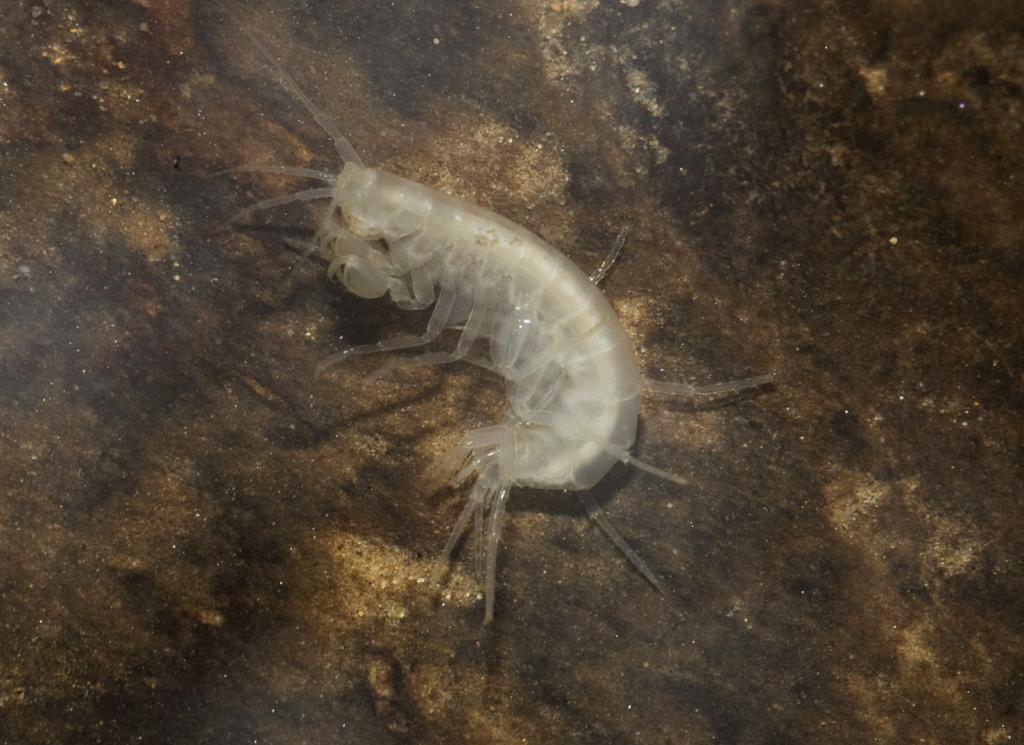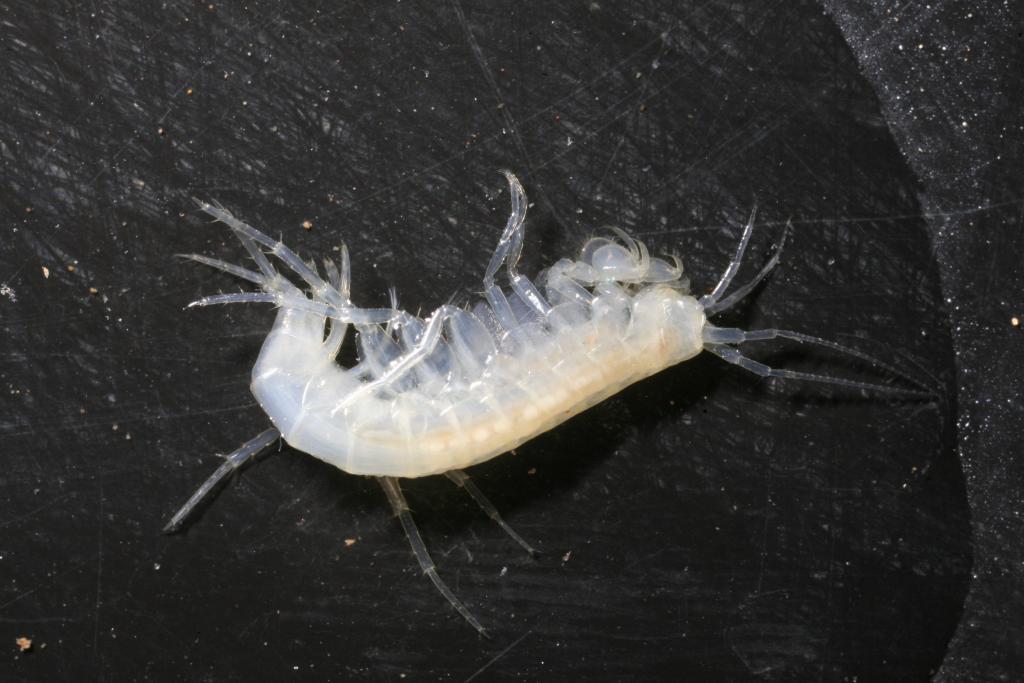Niphargus fontanus was originally described by Bate (1859) from specimens collected from Ringwood, Hampshire and Corsham, Wiltshire. Since the original description is rather short and poorly illustrated, Gledhill (1980) designated and re-described the lecotype from one of two syntypes held at the British Museum of Natural History. Niphargus fontanus is differentiated from Niphargus kochianus by lateral spines on the telson lobes and an obtuse palmar angle on the propodus of gnathopods 1 and 2. The propodus of gnathopod 2 is distinctly larger (longer and wider) than that of gnathopod 1, a key distinguishing feature for N. fontanus. Epimera 2 and 3 have a sub-rectangular posterodistal angle. Specimens generally tend to be 8 to 10mm in length, although smaller specimens have been recorded from interstitial habitats and those from caves and chalk aquifers have been noted to be significantly larger, up to 15mm. Larger specimens tend to be considerably more ‘robust’ in shape in comparison to Niphargus aquilex of similar length.

N. fontanus is known from groundwater sites (including wells, boreholes and interstitial gravels) across southern England and Wales, from Kent in the east, as far north as Cambridgeshire, and Carmarthenshire and Breconshire in the west. It is absent from the far south west (Devon and Cornwall). With the exception of South Wales and a few other outlying records, its distribution is mostly concentrated south of the Devensian limit. N. fontanus is the most cavernicolous (cave-dwelling) of the British niphargids and it is widely recorded from caves in the Mendips and South Wales.
Away from mainland Britain, N. fontanus has also been recorded from two wells on the outskirts of St. Hellier on Jersey. On the continent it is known from eastern France, Belgium, Germany and Austria.
Specimens of N. fontanus from cave habitats and chalk aquifers generally tend to be larger and more robust than those from interstitial sites and other rock strata. It is believed that this is possibly a response to the larger groundwater conduits found in karst (limestone and chalk). It has also been suggested that food sources might be more available in cave habitats. Across Europe N. fontanus consists of four distinct lineages, two of which are found in Britain and one of which is endemic (McInerney et al., 2014).

